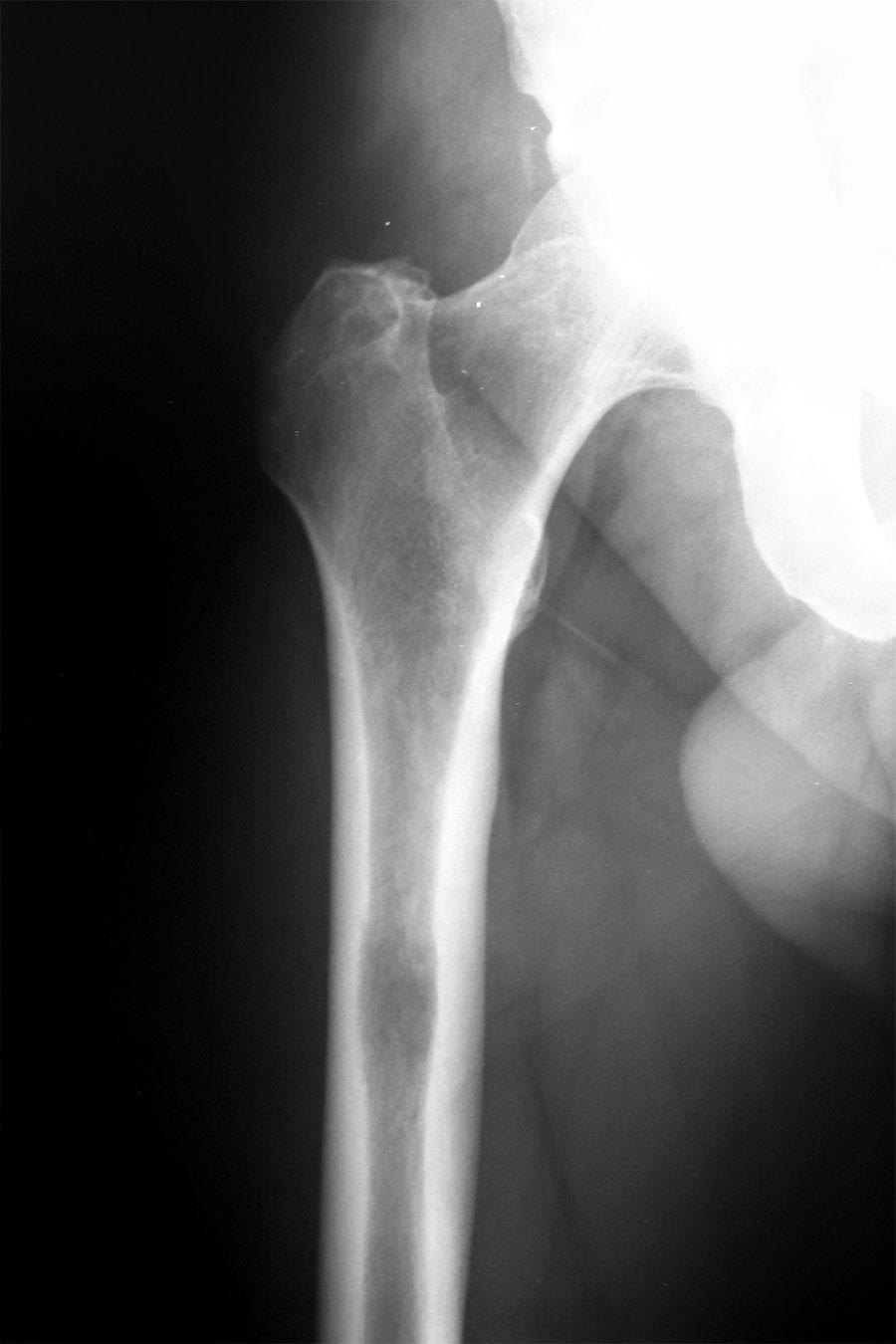When Cancer Spreads to Bone, A Single Dose of Radiation Therapy May Control Pain
, by NCI Staff
For patients with cancer that has spread to their bones, a single dose of radiation therapy may treat bone pain as effectively as a series of lower doses of radiation delivered over multiple days, according to the results of a clinical trial.
When cancer spreads, tumor cells frequently travel to bone, sometimes causing debilitating pain. Radiation therapy has long been used to shrink metastatic bone tumors to help relieve this pain, but no consensus has been reached about the optimal dose of such palliative radiation and whether it should be delivered in a single dose or in multiple treatments.
To explore this question, researchers enrolled 160 patients at the University of Texas MD Anderson Cancer Center in a phase 2 randomized clinical trial that compared a single higher dose of radiation therapy to multiple lower doses—the current standard—delivered over 2 weeks. The patients had painful bone metastases that mostly did not involve the spine.
In the trial, a single dose of radiation therapy was not inferior to the standard multiple doses in terms of controlling pain and recurrences at the treated sites, Quynh-Nhu Nguyen, M.D., and her colleagues reported in JAMA Oncology on April 25.
Due to advances in treatment, more patients with metastatic cancer and bone metastases are living longer today than in the past, so the need to address bone pain has increased, the study authors wrote. Treating bone pain is critical to helping maintain patients’ quality of life, they added.
“This is one of the most exciting studies about the value of radiotherapy treatments for bone pain to come out in the past several years,” said Stephen Lutz, M.D., a radiation oncologist at Eastern Woods Radiation Oncology in Findlay, Ohio, who was not involved in the study.
“Radiation therapy has always provided safe and effective relief for patients experiencing bone pain from metastatic cancer,” Dr. Lutz continued. “The results of this study suggest that the effectiveness of radiation therapy can be greatly improved by using new technologies.”
These technologies—which include 3-dimensional radiation therapy and intensity-modulated radiation therapy (IMRT) and were used in this trial—allow doctors to safely deliver higher doses of radiation than earlier techniques while sparing healthy tissues as much as possible, noted Dr. Nguyen.
Addressing Concerns about Previous Trials
In recent decades, a number of randomized clinical trials have tested different ways to use radiation therapy for bone metastases. These studies employed the tools available at the time, including 2-dimensional radiation therapy, and a relatively low dose of radiation, such as 8 gray (Gy).
Results from some of the trials have suggested that delivering palliative radiation in a single dose provides equivalent pain relief as delivering it in multiple smaller doses, the study authors noted.
But single-dose regimens have also been associated with higher rates of having to re-treat patients whose pain has returned, the authors added.
“Our study addresses the concerns with the previous trials that may contribute to reasons clinicians are not using the single-dose treatment for patients,” said Dr. Nguyen. The trial's goal, she continued, was to show that the single dose was equivalent, or not inferior, to the multiple-dose regimen in terms of pain relief.
Patients in the single-dose group received a higher dose than previous trials, either 12 or 16 Gy, depending on the size of their metastatic bone tumors. Patients in the other group received a total of 30 Gy, delivered over the course of 10 treatment sessions.
To compare the outcomes of the two treatment regimens, the researchers analyzed pain questionnaires filled out by patients and measured how much pain medication each patient used.
The researchers found that the higher single dose was both safe and effective. They also did not observe differences between the groups in radiation treatment-related side effects, such as fatigue, or scores on quality-of-life assessments.
The study showed more patients in the single-dose group reported all or some of their bone pain had been alleviated at 2 weeks, 3 months, and 9 months, compared with patients in the multiple-dose group.
Moreover, at both 1 and 2 years after the initial treatment, the rate of tumor recurrence at treated bone sites was lower in the group that received a single dose than in the group that received multiple doses.
Toward Individualized Care for Patients with Bone Pain
“The current results are based on a small number of patients and will need to be confirmed in a larger group treated at multiple different cancer centers,” said Dr. Lutz.
A larger clinical trial is planned to evaluate the higher, single-dose approach in more patients. The findings could help clinicians treat patients with the most appropriate radiation therapy regimens for their bone metastases, Dr. Nguyen said.
She stressed that patients with metastatic cancer vary in their overall health, how long they are expected to survive, and the extent of bone metastases.
“Some patients will have a single bone metastasis, whereas others have three metastases or many,” she said. “We should individualize our care for these patients.”
For instance, for a person with a life expectancy of less than a month, “it’s reasonable to give them a single low dose of radiation for pain,” Dr. Nguyen continued.
But for those who are functioning well and whose life expectancy is relatively long, “it makes sense to give them a single higher dose of radiation to alleviate pain over the long term,” she added.
